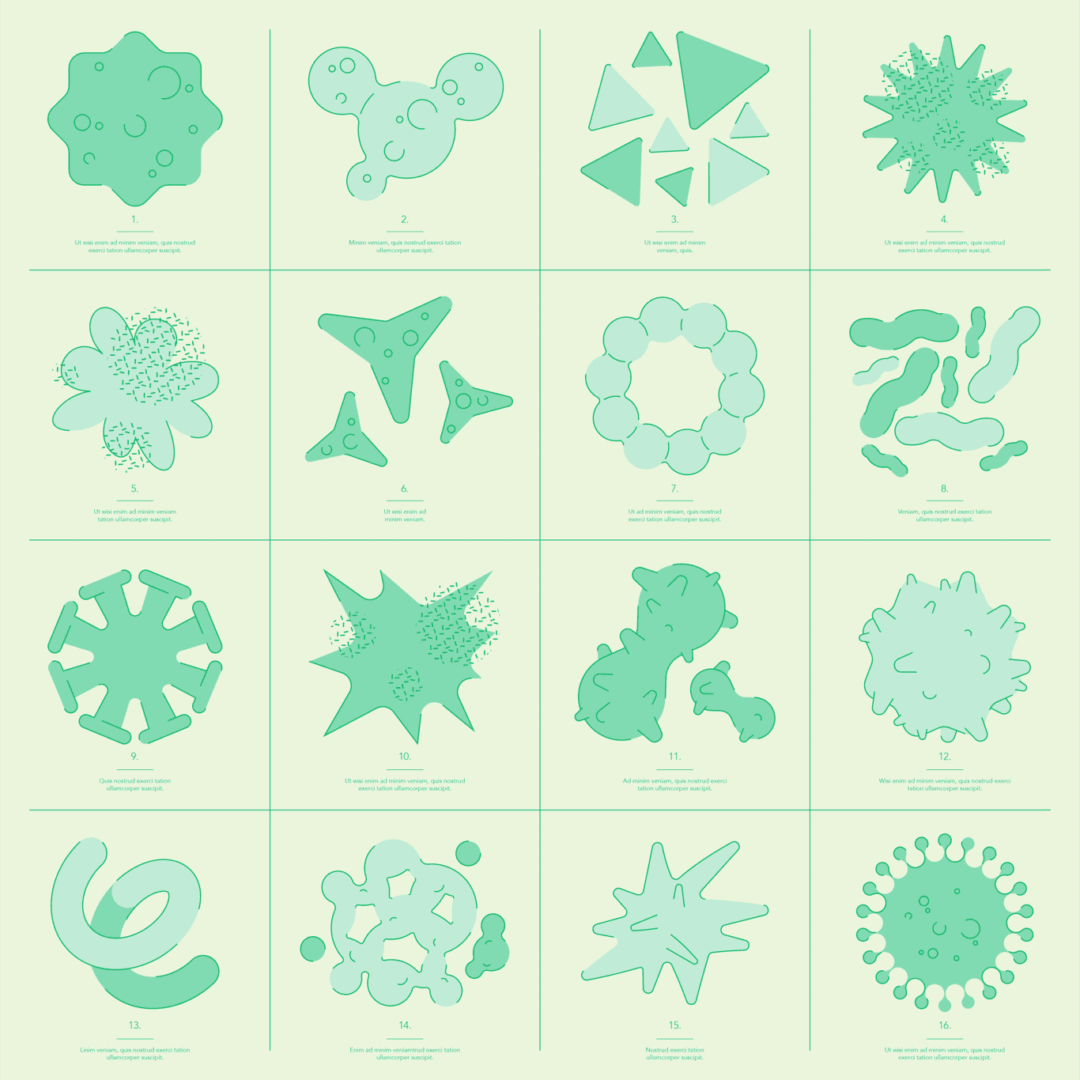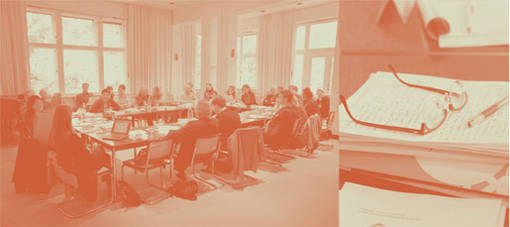What you are about to read is not fiction, but neither is it fact. It is a catalogue of illnesses that do not exist, at least not in the evidence-based sense of the word. Yet, all descriptions are agglomerations of observations based in real-life encounters with ill or borderline-ill persons.
My motivation for beginning this encyclopedia of maladies in academic anthropology came after recovering from years of stress and anxiety related to a severely damaging working environment at a university. Though I have been thankful of the diagnosis and subsequent treatments I have received on my way to recovery, there has always been a profoundly problematic bias to it: it diagnosed me as ill and treated me to become healthy. In other words, I got singled out and treated while the anxiety-inducing environment was only rhetorically cautioned.
This piece is a counter-diagnosis. It uses the positive traits of diagnosis […] to point at and describe some of the toxic traits anthropologists may develop in academia […].
This piece is a counter-diagnosis. It uses the positive traits of diagnosis, namely identification and verbalisation, to point at and describe some of the toxic traits anthropologists may develop in academia and which in sum constitute a sick working environment. As I have heard in therapy: the first step to recovery is diagnosis. Thus, I endeavour to embark upon a reciprocal quest by offering this encyclopedia to academia, my ‘giving back’, in the hope that it will be poignant enough to hurt but also humorous enough to initiate a language for healing.
Maladies in academic anthropology
The following sections describe the primary maladies – major groups of illnesses – that I have recorded. Cautious reading is advised as there may be significant local variations in symptoms as well as cross-infection cases involving overlaps between several maladies or symptoms.
Hyperideal heroism
The specification of this condition is a firm though often subconscious belief in an extreme version of a professional hero-ideal, regarding ‘true’ anthropologists as the lone hero venturing ‘out there’ in the wild to bring back knowledge. The delusion gains strength from the history of classic anthropology where fieldwork was done by men, alone, far away and in rough conditions. Though such work conditions are no longer the preconditions of fieldwork or indeed anthropology, persons with hyperideal heroism suffer from the delusion that other kinds of fieldwork are inferior or indications of a lazy/soft/loose character of the fieldworker.
As the condition is solipsistic and polemic in nature people suffering from this condition typically have very little insight into their own problem but instead consider any steps towards self-awareness or treatment as an attack that needs to be overcome, defeated or conquered. Therefore, treatment is difficult as it may further the condition. If several persons suffer from hyperideal heroism at the same workplace they may develop a schismogenetic mass-psychosis where their self-righteous, confrontational criticism spirals out of control.
Despite the gendered background of the malady, both men and women may contract hyperideal heroism (though the percentage of men suffering from this condition might well be higher – more research is needed).
Typical symptoms:
People with hyperideal heroism often express an obsessive emphasis on overcoming challenges, e.g., by turning dangerous, hard or traumatic experiences into boisterous stories of either heroic or humorous genres. The condition may also cause a further pathological righteousness syndrome resulting in hostile outbursts of statements such as “don’t be surprised if you get divorced after fieldwork” or “interview-fieldwork”[1] (the latter must be pronounced in a sarcastic sneer). Another known characteristic is that both positivity and negativity is expressed through fierce polemic behaviour.
Empathetic masochism
Empathetic masochism is a self-defeating disorder defined by recurrent and intense feelings of emotional pain, guilt, insufficiency, and shamefulness along with delightful moral arousal from this self-suffering. Symptomatic of this disorder is that it revolves around strong and painful empathetic emotions towards an ‘empathetic object of study’, typically suffering human subjects or subject positions. The disorder is based in a simultaneous affective emotional experience of the pain of the empathetic object and shame of feeling this pain as it is rationally understood by the empathetic masochist as ‘secondhand’ and not one’s own pain.
The condition is nourished by distorted implicit ideas of science professionalism as detached, objective and separable from both body and emotions. As such, it is a dissociative disorder that causes a continuous delirious double guilt for subsuming others’ pain while insisting that rationally the sensation of pain is not one’s one – not ‘real’ – and therefore one should be able to separate or manage it. At the same time, this stage of continuous guilty suffering becomes to the ill person the only morally justifiable way of being and therefore the only way to feel moral arousal and (painful) comfort.
Typical symptoms:
A strong orientation towards utopian goals of giving justice, voice or rectification to the empathetic object resulting in a chronic moral insufficiency condition. The condition may develop into a regular algomoralis[2] syndrome where the person dives into ever more painful conditions of the empathetic object to engage in utopian rectifying of suffering (e.g., inequality) but also to let oneself suffer even more for not suffering (and for vicarious suffering and for not being able to not suffer and for letting emotional pain cloud the objective and professional detachment, and for feeling moral arousal from self-suffering).
Compulsive opportunistic tunnel-vision disorder (COTD)
COTDers suffer from the strong delusion that the end goal they are pursuing justifies the means (any means) of getting there. The condition is primarily defined by a lack of restraint known as compulsive professional hyperphagia which is extreme goal-oriented opportunistic strategising, where anything and anyone may be consumed and utilised to reach the professional goal. Additionally, they attain a profound tunnel-vision that only allows them to see and engage with things and people as long as they speak to the goal.
If left untreated the condition may easily leap into the full-blown behavioural disinhibition of ruthless phantasmatic egotism manifested in increased disregard of social conventions, accelerating levels of opportunistic strategising without consideration for present consequences and a highly selective assessment of past learnings (e.g., critique from colleagues). In later stages people with this condition develop a reduced responsiveness to the distress they cause others (e.g., junior colleagues) along with the uncritical and very resilient delusion that they in fact help others in the process of reaching their own goals. This combination serves them to justify and accelerate their own disorder – this is also known as the greater good hyperbolism.
Typical symptoms:
COTDers develop a dopamine-infused limitlessness towards work. COTDers are energetic, charismatic, often visionary and not intentionally harmful, however they often show reduced inhibitory control regarding the demands they put on other people – some of whom are professionally dependent on them. Oblivious as COTDers are of their own mal-condition, they may say things like; “it’s no problem, I have done it lots of times before” when confronted with critique or restrictions questioning their behaviour.
Known infectious sequelae:
Though COTDers often reach impressive professional goals – that might indeed also benefit others – colleagues to COTDers must exercise minute attention to defending their personal limits towards work (e.g. working hours, tasks, demands, weekends/holidays, etc.). This effort may still cause colleagues to COTDers stress, frustration and fatigue.
Hermeneutic disillusion
Hermeneutic disillusion begins abruptly with a severe double-doxic breakdown during which the ill person loses faith in anthropology as profession after realising that anthropologists interpret and theorise the world but also theorise and interpret the conditions under which such interpretations are possible – which includes anthropology itself. Persons suffering from Hermeneutic disillusion may experience profound Iconoclastic grief – showing anger and blame towards their profession which they feel has left them with a painful epistemic non-belief.[3]
The most prominent effect of the illness is, however, that it causes severe professional-superiority-inferiority-complex. Here the ill person finds anthropology to be a super-relativistic science that really can’t be used for much but simultaneously holds the firm belief that anthropologists are the only professionals capable of seeing through the falsum of truth that other sciences are mindless slaves to (this may be connected to patients self-treatment of their iconoclastic grief by viciously lashing out at other sciences for being unaware of their own doxic nature. However this has not been fully established yet – more research needed on this aspect). If not treated, the ill person may enter a state of professional fugue[4] where one loses any sense of professionalism or indeed develops a strong psychotic delusion that there can be no such things as science or knowledge.
Typical symptoms:
Even in its early stages the illness can be identified by fits of acute relativism where the infected person becomes momentarily incapable of having any professionally informed stance or opinion. The condition is especially known to attack students and people who didn’t recover from reading the 1980s debates on representation.
Mysophobia Academicai / Academic Mysophobia[5]
Academic Mysophobia is a paranoiac obsession with scientific purity. Ill persons show strong anal-retentive fixations with critical research of core theoretical issues within anthropology itself, along with denialism towards any prosperous cross-fertilisation outside of academia. The illness causes a critique–cutting-core superiority complex where the ill perceive themselves as highly experimental and cutting edge, even though their dogmatic attitude towards scientific purity forces them to reside within narrow theoretical landscapes of a few white men that cross-quote each other.
Academic Mysophobics are strongly attracted to each other and often gather in clannish intellectual circles to elate in fetishising barely accessible theory as a means of controlling the impureness outside their circle. Such groups often develop a collective applied-taboo where any mentions or contact with applied anthropological endeavours, professionals, or labour is perceived as highly polluting. Confrontation with the taboo may drive the ill into severe compulsive french-philosophy seizures characterized by repetitive cleaning of the besoiled science by showering it in ever more highly abstracted and cryptically written theories.
Typical symptoms:
Even in its early stages Academic Mysophobics may be identified by their inability to ask questions or give responses outside of their own work and theoretical topics, regardless of the content of the meeting, presentation, symposium, workshop, etc.
Known infectious sequelae:
If not cautious, colleagues of Academic Mysophobics may come to suffer from academic impostor syndrome – an inferiority disorder where capable professionals start referring to themselves as not ‘proper’ or ‘real’ anthropologists.
Afterword: Do your medical check-ups
Now that you have read about the main illnesses you will be able to recognize symptoms and outbreaks within your working environment. For limiting the spread of contamination please alert any person showing symptoms by referring them to this encyclopedia. As the maladies described here often grow unnoticed for long periods of time it is recommended to do regular self-examinations by taking a long hard look in the mirror approximately once a month.
I encourage readers to contribute to the encyclopedia by writing up maladies they have experienced or come across working in, with, or around academic anthropology. Please post them here in the commentary or email them to mette.my.madsen@gmail.com.
[separator type=”thin”]
Abstract
Though important work has been done in recent years bringing forth the implicit, biassed attitudes and comportment within academic anthropology, particular unfortunate patterns of academic culture persistently resists change. By introducing an encyclopedia of maladies, this piece identifies, diagnoses and catalogues some of the toxic traits anthropologists may contract working in academic environments. By doing so I hope to deliver a poignant critique of a sick working environment, but also a humorous language for initiating healing and change.
[separator type=”thin”]
References
[1] A derogatory expression for describing fieldwork based primarily on interviewing as opposed to ‘living with’ the field.
[2] Algos means pain. Moralis means manners of moral.
[3] The only truth is, there is no truth.
[4] Fugue is a rare psychiatric phenomenon characterized by reversible amnesia for one’s identity.
[5] Mysophobia is the fear of contamination. Myso from ancient Greek μύσος (músos) meaning uncleanness.
Implicit literature
Barlow, H., D. (ed.). 2023. Clinical Handbook of Psychological Disorders. Sixth Edition. A Step-by-Step Treatment Manual. New York: Guildford Press.
Bateson, G. 1968. Naven. Stanford: Stanford University Press.
Bourdieu, P. 1990. The logic of practice (R. Nice, Trans.). Stanford: Stanford University Press.
Clifford, J., Marcus, G., E. 1986. Writing Culture: The Poetics and Politics of Ethnography. University of California Press.
Douglas, M. 2002 (1967). Purity and Danger – An Analysis of Concepts of Pollution and Taboo. London: Taylor and Francis Ltd.
Gadamer, H.G. 2004. Sandhed og metode. Grundtræk af en filosofisk hermeneutik. Viborg: Systime Academic.
Latour, B. 1998. A few steps towards the anthropology of the iconoclastic gesture. In: Science in Context, vol.10 (1), pp. 63–83.
Le Guin, U., K. 1989. The Carrier Bag Theory of Fiction. Ignota Booksh.
Madsen, M. M. 2020. Hyper-ideal Sociality: Rushing Activities as Extreme Rituals of Learning Professional Conduct. In: Journal of Extreme Anthropology, vol. 4(2), pp. 89–110-
Mauss, M. 2011 (1925). The Gift: Forms and Functions of Exchange in Archaic Societies. Connecticut: Martino Fine Books.





